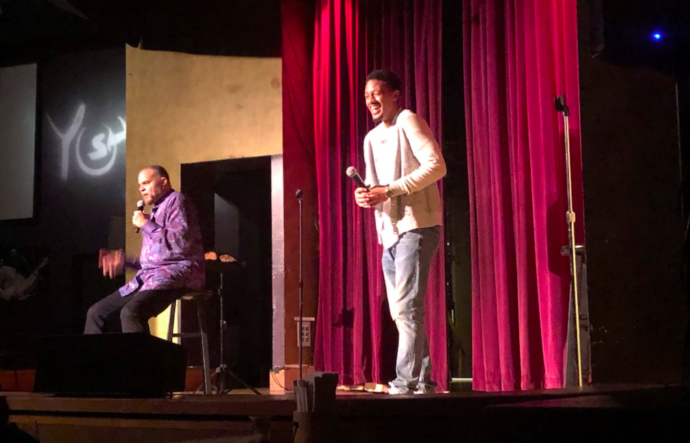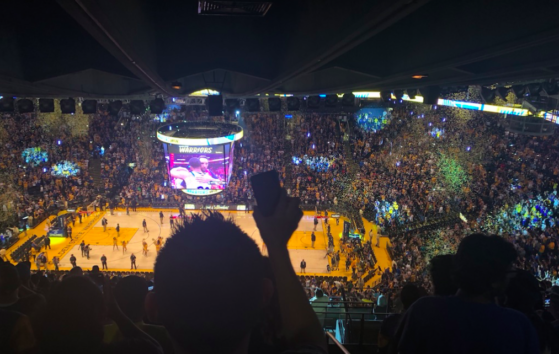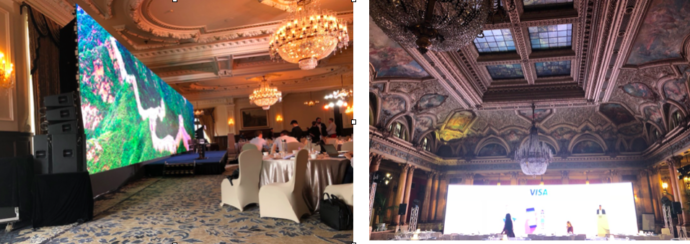The pictures in this blog posts are for two speeches that I have done in the last month or so.
One from a classic old hotel in Rome for a speech for Visa’s clients from EMEA.
And the other one from the iconic Waldorf Astoria on the Bund in Shanghai a few days ago where I spoke to the top managers at the global management conference of Permira.
Both conferences had about 200 attendees (which means they were not a very large conference) and both conferences had substituted the traditional backdrop for a LED-wall stretching the full length of the big stage.
Big LED-walls are of course not something new, but they used to be used only for big conferences with 500-1000 people in the audience because of the cost of setting them up.
I am writing this post because at both the Visa conference and the Permira conference the event managers joyfully told me: “The cost of getting a LED-wall was virtually the same as to get a traditional backdrop”.
I guess that means that we speakers have to get much more used to speaking in front of an LED-wall. (And as a speaker I can see that happening: In the last 6 speeches I have done 3 had LED-walls and 3 had printed back-drops.)
So what is the difference, you say? Not a huge one, but a few things to think about:
1) Less chance that the laser-pointer will work (the light on the laser pointer is just not strong enough to show up on the LED-wall) so if you are going to pinpoint something on stage be sure you have an alternative way of doing it.
2) More light behind you (so make sure you do not only do a sound-check, but also a light-check, especially if you are using a flip-chart where it becomes very important that the light facing the stage is strong enough)
3) If you are not using slides: Make sure you have a background picture that re-inforces your message, or that you at least approve of the back-ground picture they will be showing during your speech (Like in the picture to the left where they threw up a huge picture of the Chinese Wall behind the panelists, if you are panelist you would like to know that beforehand.)
4) If you are using slides: Ask to see the back-ground framing-picture that will be used around your slides (your slides will be “picture-in-picture” on a much bigger picture, be sure you know what that picture is. (I guess I am saying, do not only do a sound-check and light-check but also a “background check” 😉
5) Especially notice if there are any animations happening in the background picture and decide if you want the background to be animated or not (most of the time they will have an animated background as well as a static background. Personally I would choose the static background DURING the speech, and let the animations happen between speakers.)
6) If it is a big conference, or if you find out about the LED-wall early enough to make changes to your slides, check if the client wants you to leave the “safety” powerpoint slide and instead want you to go for the slide-deck that shows up on the full wall. (So add that question about “what kind of technology will be used for the backdrop?” to your briefing call list of questions.)
7) Realise that our audiences is quickly getting used to huge, animated, lit up stages – even for small conferences – and that puts different demands (and expectations) on us as speakers. No, it doesn’t mean we HAVE to have flashy animations in our speeches, but it does mean that audiences will expect it more and more.
That’s my thoughts on professional speaking this week based on what inspired me the last few days.



